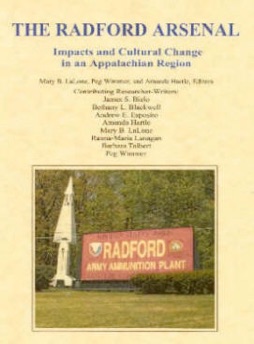In 1940-41, a stretch of rural farmland lying along the New River was transformed in a short 7-month period into a booming World War II industrial war-effort complex. The building of the Radford Arsenal brought tremendous change nearly overnight to the New River Valley in Appalachian Virginia. Changes to towns and community life came as people flooded into the region, seeking work at the Arsenal. Housing subdivisions -- such as Fairlawn, Radford Village, Sunset Village, and Airport Acres, to name a few -- sprang onto the landscape to accommodate the housing needs of Arsenal families. Aspects of family life changed as household members reoriented their lives to commuting and working at the Arsenal.
Today, when you talk with people in the region, everyone has family members or neighbors who worked at the Arsenal. The Arsenal is now a major part of the New River Valley's cultural heritage.
The purpose of this Radford University project has been to document the impacts and cultural changes of the Radford Arsenal on families and communities in this Appalachian region.





